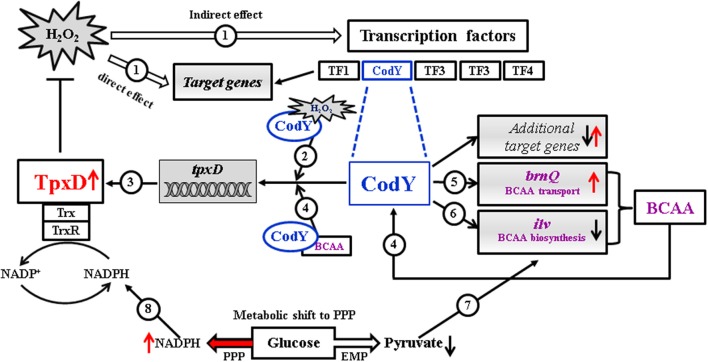Figure 6.
Proposed schematic model illustrating the contribution of TpxD and CodY to the pneumococcal global transcriptional response to H2O2. Under oxidative stress conditions H2O2 activates directly or indirectly a cascade of genes and transcription factors (TF), among them CodY (1). We speculate that CodY activation by H2O2 is due to a conformational change originating from specific cysteine oxidation (2). As a result, CodY binding to tpxD regulatory sequence is enhanced, leading to TpxD up-regulation (3), thereby preventing the accumulation of high H2O2 levels. BCAA are known to enhance CodY binding to DNA (4), thereby inducing tpxD expression (3). Under oxidative stress conditions, CodY modulates the intracellular level of BCAA through the up-regulation of the BCAA transporter, brnQ (5) and down-regulation of the BCAA biosynthetic machinery (ilv) (6). Consequently, the need for pyruvate, which is the central precursor in BCAA biosynthesis, is expected to decrease (7) leading to a shift in glucose catabolism toward the pentose phosphate pathway (PPP). This metabolic shift will result in increased NADPH formation (8), thus enhancing TpxD recycling by the thioredoxin-thioredoxin reductase system.

